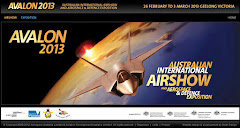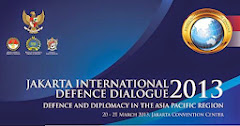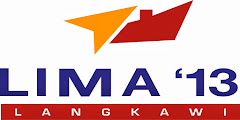 RAAF's A330 MRTT with Hornet (photo : Australian Aviation)
RAAF's A330 MRTT with Hornet (photo : Australian Aviation)
FOR an investment of almost $2 billion -- relatively modest by defence standards -- Australia is about to acquire five aircraft that will dramatically boost the capability of the defence forces, and the RAAF in particular.
The aircraft are the Airbus-built multi-role tanker transports, which will give the air force unprecedented regional reach.
Combining those with six airborne early warning and control aircraft plus 24 Super Hornets -- as well as our ageing but upgraded 71 Classic Hornets -- Australia will continue to be the dominant air power in Southeast Asia and beyond.
At the moment the RAAF's combat aircraft can only fly for as long and as far as a single load of fuel will take them. For a Classic Hornet that is 2000km with very limited weaponry.
That is about to change with the reintroduction of aerial in-flight refueling. Unclassified figures show that a single tanker aircraft could support four Hornets over a range of 6500km and still have fuel to spare. That indicative range is enough for Classic Hornets flying from Tindal in the Northern Territory to reach Sri Lanka, Beijing or Tokyo.
Add on the additional striking distance provided by modern stand-off weapons and you get some idea of what the five tankers will do for the combat power of the RAAF.
The tankers, based on the highly successful Airbus A-330 passenger aircraft, can carry 111 tonnes of fuel without additional tanks, and 270 passengers and eight large cargo pallets -- simultaneously if necessary.
This is possible because the designers of the twin engine A-330 decided to equip it with the same wings as the much larger four-engine long-range A-340, itself able in some configurations to fly with a full load of passengers and cargo more than 15,000km.
Airbus and Airbus Military are owned by European defence and aerospace giant EADS, which has sold Tiger attack helicopters and larger multi-role helicopters to the army through its subsidiary, Eurocopter.
As transports, the aircraft can travel 12,400km with a 15-tonne payload) -- enough range to move troops and cargo from northern Australia non-stop to Afghanistan, Seattle or even to the tip of South America by overflying the Antarctic.
Airbus program director for the Australian tankers, Luis Guerra Pena, says: "This aircraft was born to be a tanker."
This view is shared by the RAAF and three other customers: Britain, the United Arab Emirates and Saudi Arabia as well as -- possibly -- the biggest user of all: the US, which requires 179 tankers to replace its ageing fleet.
The MRTT was selected as the preferred bidder, only to be forced into a new tender as a result of lobbying by US incumbent Boeing. A decision on the new bid is pending. The Airbus tanker fleet also includes the A-310 MRTT, operated by Germany and Canada.

With air refuelling RAAF's Hornet can reach Srilanka, Beijing, and Tokyo (image : GoogleMaps)
These are hose-and-drogue systems streamed from vacant engine hard points about midway along each wing, and a large, deployable boom lowered from beneath the rear of the aircraft.
Australia needs two refueling systems for the types of aircraft it operates -- hose-and-drogue for the fighters, and a boom for the early warning aircraft and other tankers.
Other changes to the A-330 are the addition of two operator refueling consoles in the cockpit behind the pilots and a variety of military communications equipment.
Design, development and testing of the prototype aircraft is being done by Airbus Military in Madrid. The remaining four aircraft are being converted by Qantas in Brisbane.
The first two are in flight testing in Madrid including extensive in-flight refuelling tests involving aircraft from Spain, Portugal and France. The third aircraft (the second to be converted by Qantas) has also completed conversion and will soon be ferried to Europe to be painted in RAAF colours.
The A-330 tanker has received military and civil certification, reducing program risk. The first two aircraft are on track to be handed over to the RAAF by Christmas.
All that remains is the completion of certification paperwork.
The aircraft will be operated by 33 Squadron based at Amberley, Queensland. The RAAF says it will take another two or three months for additional checks to be completed in Australia, with the aircraft commencing operations about March next year. Another two aircraft will be delivered later next year, with the final tanker arriving in 2012.
Against conventional wisdom, Australia has been the lead customer in a complex and ambitious aerospace project that can already be considered a great success.
Luis Guerra Pena modestly puts this down to a co-operative relationship with the RAAF, and a great aircraft.
In fact, it is only an accident of timing that Australia took the lead. Initially the first customer was to have been the Royal Air Force, the British plan was for the aircraft purchase to be financed by the private sector.
This might have been a good idea in principle, but the arrangements took 18 months longer than expected, by which stage the RAAF had moved to first place in the delivery schedule.
The delivery is slightly late -- RAAF hoped to receive the aircraft last year -- mostly because of changes mutually agreed between the customer and Airbus.
A commercial A-330 costs about $200 million, depending on configuration, so Australia seems to have boosted its combat and transport capability at a good price. In addition, the Australian companies that have undertaken the conversion work have required certification by Airbus, which means that can now win work on any Airbus aircraft, commercial or military.
The capabilities of the new tankers are so great, one senior RAAF source says, "it will take us several years to learn how to fully exploit the potential of such a potent aircraft".










Tidak ada komentar:
Posting Komentar